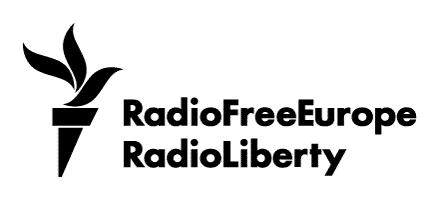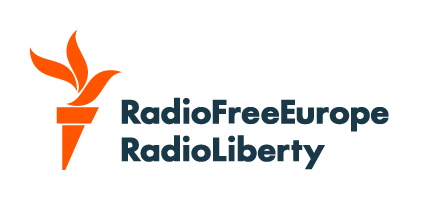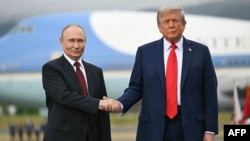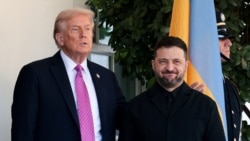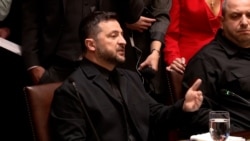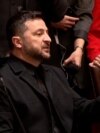Ukrainian President Volodymyr Zelenskyy came to Washington hoping to get a commitment on new weapons, but instead met an American president newly intent on brokering a peace deal to end the more than three-year war in Ukraine.
Zelenskyy left his October 17 meeting with US President Donald Trump without receiving much-sought Tomahawk cruise missiles. He now finds himself preparing for a new phase of US-led diplomacy as American and Russian officials lay the groundwork for a potential agreement at an upcoming summit between Trump and Russian President Vladimir Putin in Budapest.
“Let both claim Victory, let History decide!” Trump wrote on social media after his meeting with Zelenskyy, saying he had told both leaders this week that “it is time to stop the killing, and make a DEAL!”
After the meeting, which Zelenskyy described as productive, the Ukrainian president spoke by phone with European leaders -- including European Commission President Ursula von der Leyen, NATO Secretary General Mark Rutte, Finland’s president, and the prime ministers of Britain, Italy, Norway, and Poland -- and said he was counting on Trump to pressure Putin "to stop this war.”
The European leaders reaffirmed their support for Kyiv on the call and said that they will continue work on developing a peace plan for Ukraine, as well as options to increase pressure on Moscow through sanctions and the use of frozen Russian state assets.
“The most important thing now is to protect as many lives as possible, ensure security for Ukraine, and strengthen us all in Europe. This is precisely what we are working towards," Zelenskyy later said about the call on his Telegram channel.
But analysts and Ukrainian lawmakers told RFE/RL that the lack of a commitment on Tomahawk missiles, another summit between Putin and Trump, and the US president’s apparent softening rhetoric towards Putin after spending weeks threatening sanctions and potential weapons deliveries has raised anxiety levels in Kyiv.
While Volodymyr Dubovyk, associate professor of international relations at Odesa University, told RFE/RL that Trump’s softening tone towards Ukraine compared to earlier meetings with Zelenskyy this year reflects a “positive dynamic,” others do not share his optimism.
“I am surprised to hear that my colleagues have high hopes for this season of negotiations,” Solomiia Bobrovska, a Ukrainian lawmaker who sits on the parliament’s National Security Committee, told RFE/RL, referring to the White House meeting and a summit slated for the coming weeks in Budapest.
“If we can shift Trump's complacency for Russia even a millimeter away and closer towards Ukraine, then that is will be good,” she added.
From Tomahawks To A Summit In Hungary
A similar unease is shared by Oleksandr Sushko, the executive director of the Kyiv-based International Renaissance Foundation.
“Trump appears to be only partially on [Ukraine’s] side,” he told RFE/RL. “Therefore, it is very important to remain sober and restrained here.”
In the weeks leading up to his meeting with Zelenskyy, Trump had mused about sending Kyiv Tomahawk missiles as he appeared to sour on Putin over his refusal to negotiate a deal to end the war.
A key reason for Zelenskyy's hastily organized trip to Washington was the possibility of Ukraine receiving the missiles, which are capable of hitting targets at a distance of up to 2,500 kilometers.
But an October 16 phone call between Putin and Trump, which occurred while the Ukrainian president was in transit to the United States, changed that with a future meeting between the two leaders set for the coming weeks in the Hungarian capital.
At a press conference after his White House meeting, Zelenskyy was asked about the missiles and what he had been told by US officials.
“We want [them] very much… we need them,” he said. “Nobody canceled this dialogue, this topic.”
Later, Trump reiterated that he wants the United States to hold on to its weaponry. "We want Tomahawks also. We don't want to be giving away things that we need to protect our country," he said.
Zelenskyy also said he is open to bilateral or trilateral talks to end the war.
“I don’t rule out that [long-range weapons] will be used someday, but [they] will definitely not be used in the coming weeks," Viktor Shlinchak, chairman of the board of the Institute of World Politics, told RFE/RL.
All Eyes On Budapest
Trump’s decision to organize another high-profile summit with Putin has somewhat changed the calculus for Kyiv, Heorhiy Chizhov, head of the Kyiv-based Center for Promoting Reforms, told RFE/RL.
“[Trump] thinks he can win, that he can get Putin to the negotiating table,” Chizhov said.
Asked by a reporter on October 17 if he thinks Putin is trying to buy time, Trump replied that he has been “played” all his life by “the best of them,” but said he thinks Putin wants to make a deal.
According to Russian foreign-policy advisor Yury Ushakov, Putin had warned Trump that allowing Ukraine to purchase the Tomahawks “won’t change the situation on the battlefield but would cause substantial damage to the relationship between our countries.”
US officials are reportedly planning more lower-level meetings with their Russian counterparts than had taken place ahead of the Alaska meeting between Trump and Putin in August.
The American side will be led by Secretary of State Marco Rubio instead of special envoy Steve Witkoff, according to the Wall Street Journal.
Trump has so far been cautious about ratcheting up pressure on Putin, but his administration also expanded intelligence sharing with Ukraine to help it strike targets inside Russia and imposed steep tariffs on one of Moscow’s top trading partners, India, over its purchases of Russian oil.
In early October, the Trump administration also sanctioned Serbia’s largest oil and gas supplier, which is majority-owned by Russian state energy giant Gazprom.
Russian officials also appear to be preparing their own offerings to present to the US side in talks.
Kirill Dmitriev, the head of Russia's sovereign wealth fund, revived the idea of building a tunnel under the Bering Sea to connect Russia and the United States though Alaska and suggested that Elon Musk’s Boring Company build it.


